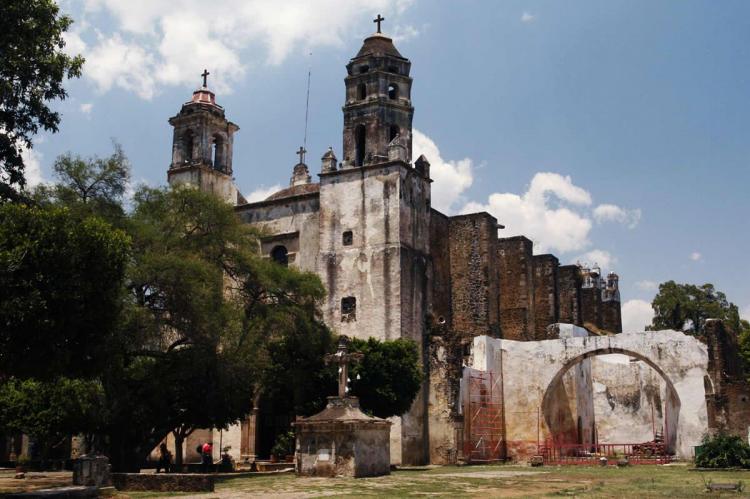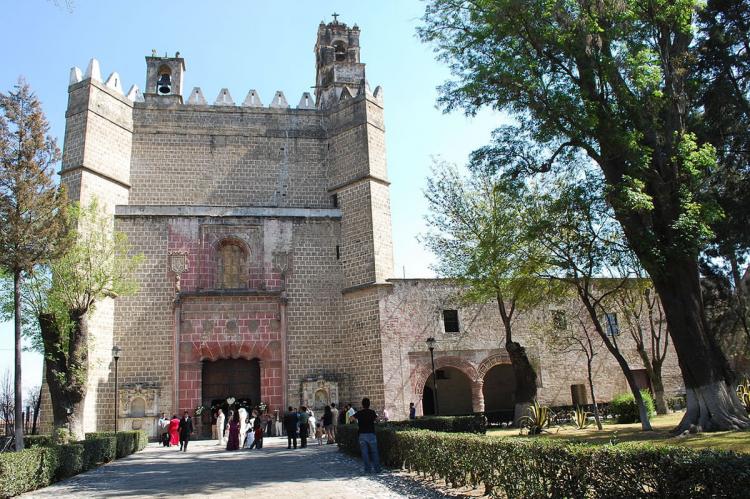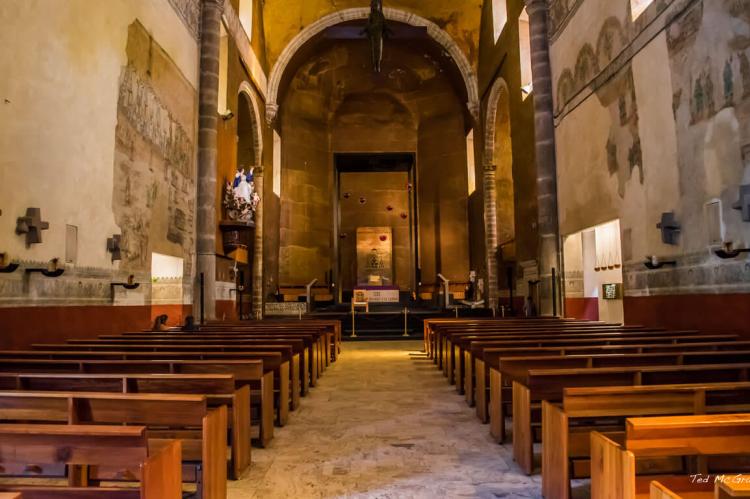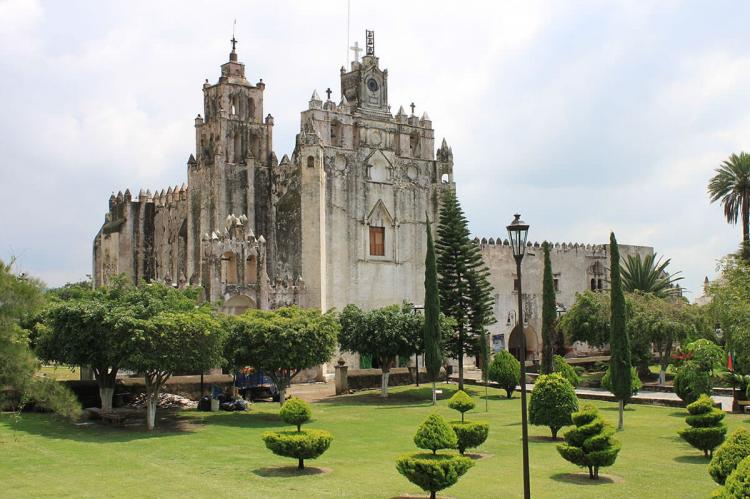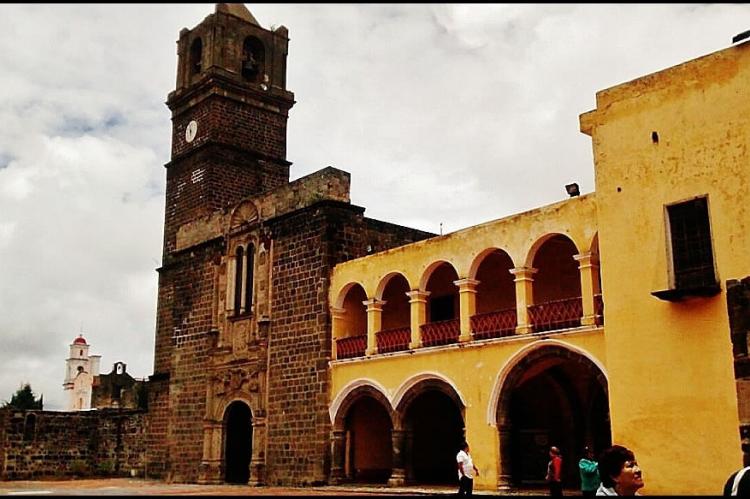Monasteries on the Slopes of Popocatepetl: Evangelization and Architectural Marvels of 16th-Century Mexico
The 16th-century monasteries on the slopes of the iconic Popocatepetl volcano in Mexico are UNESCO World Heritage sites with 14 parts. Built by the Augustinians, Franciscans, and Dominicans, they symbolize the evangelization and colonization efforts that shaped northern Mexico.
Bridging Worlds: The Cultural Exchange Behind the Monasteries on the Slopes of Popocatepetl
The Monasteries on the Slopes of Popocatepetl, situated in the shadow of one of Mexico's most iconic volcanoes, are a remarkable ensemble of 14 religious complexes that date back to the early 16th century. Spanning the states of Morelos and Puebla, these monasteries, built by Augustinians, Franciscans, and Dominicans, stand as enduring symbols of the religious and cultural transformation that unfolded in the region during the early years of Spanish colonization. This UNESCO World Heritage Site represents a significant chapter in evangelizing and colonizing Mexico's northern territories. It is an architectural testament to the profound exchanges between European and Indigenous cultures.
Evangelization: Spreading Christianity Across Central Mexico
The construction of these monasteries was driven by the mission of evangelizing the areas surrounding the Popocatepetl volcano, particularly the regions to its south and east. The religious orders—Augustinians, Franciscans, and Dominicans—were instrumental in spreading Christianity within Mesoamerica. This region had been home to advanced pre-Hispanic civilizations such as the Aztecs and Mixtecs. These missionary efforts occurred during intense cultural interaction and exchange between the Spanish and the Indigenous populations, with the monasteries serving as focal points for religious, educational, and social activities.
Beyond their religious purpose, the monasteries were centers of education and cultural integration. They facilitated dialogue between Indigenous communities and missionary friars, bridging the gap between pre-Hispanic traditions and European religious practices. As such, these monastic complexes played a pivotal role in the broader colonization process, spreading Christian beliefs and introducing new cultural and social frameworks.
Architecture: A Blend of Indigenous and European Traditions
The monasteries built on the slopes of Popocatepetl are renowned for their innovative architectural designs, which combine European Gothic and Renaissance styles with Indigenous building techniques and spatial concepts. One of the most distinctive features of these monasteries is the large atriums in front of their single-nave churches. These expansive courtyards were central to the missionary strategy, as they provided a gathering place for large groups of Indigenous converts who attended outdoor masses and religious events.
At the heart of this architectural arrangement was the capilla abierta, or open chapel. These open-air chapels were used for mass, often drawing large crowds of Indigenous people unfamiliar with indoor religious spaces in the early conversion stages. This architectural innovation was a direct response to the local culture, emphasizing communal spaces that reflected the people's spiritual and social life. The design of the atriums, with their wide open spaces and monumental chapels, became a model for missionary architecture across New Spain, influencing not only religious complexes in Mexico but also throughout Latin America.
The 14 monasteries, located across Morelos and Puebla, include prominent examples such as those in Atlatlahucan, Cuernavaca, Tetela del Volcán, Yautepec, Ocuituco, Tepoztlán, Tlayacapan, Totolapan, Yecapixtla, Hueyapan, and Zacualpan de Amilpas in Morelos, as well as Calpan, Huejotzingo, and Tochimilco in Puebla. Each of these monasteries showcases the harmonious integration of open spaces with religious architecture, illustrating space's role in evangelizing.
The architectural layout of these monasteries, characterized by their large atriums, open chapels, and adjoining monastic buildings, reflects the Franciscan and Dominican emphasis on simplicity, functionality, and accessibility. The monasteries' positioning within the landscape, often with sweeping views of the surrounding valley and the looming presence of Popocatepetl, further emphasizes their symbolic role as centers of spiritual and cultural transformation.
Open Spaces: Innovation in Religious Architecture
A key characteristic of these monasteries is the intricate relationship between built and open spaces. The large atriums that dominate the monastic complexes were functional and symbolic, serving as a visual and physical representation of the meeting of two worlds—the Indigenous cultures of pre-Hispanic Mexico and the Christian traditions introduced by the Spanish friars.
Within these atriums, smaller chapels known as posas were built at each corner, often used for processions or teaching catechism. These posas, along with the open-air chapels, highlight the communal nature of the religious practices introduced by the missionaries, where mass gatherings of Indigenous converts could take place under the open sky. This architectural approach, emphasizing the importance of outdoor spaces, set these monasteries apart from traditional European religious complexes, where religious services were primarily held indoors.
This integration of open spaces with religious structures created a unique architectural vocabulary that blended elements of pre-Hispanic public space with European religious functions, resulting in a distinctly Mesoamerican adaptation of Christian architecture. The influence of this style extended far beyond the slopes of Popocatepetl, shaping missionary efforts and church construction throughout New Spain and beyond.
Legacy: Centers of Urban and Cultural Development
The monasteries on the slopes of Popocatepetl were not just religious buildings; they were foundational elements in the urbanization of central Mexico. Many of the towns surrounding these monastic complexes, such as Cuernavaca and Tepoztlán, grew up around the monasteries, which served as centers of education, trade, and community life. The influence of these early religious structures can still be seen today in the layout and organization of these towns, where the monasteries remain focal points of both religious and social activity.
The architectural model of the monasteries—characterized by large atriums, single-nave churches, and associated monastic buildings—became a regional norm, influencing the design of religious and civic buildings for centuries. The hydraulic structures found at several monasteries, designed to provide water for the community, are further evidence of these complexes' lasting impact on local infrastructure and daily life.
Even today, the monasteries continue to serve as centers of cultural and religious life in the surrounding communities. Their preservation as UNESCO World Heritage Sites highlights their enduring significance as architectural masterpieces and symbols of the cultural exchange that defined early colonial Mexico.
Conclusion
The Monasteries on the Slopes of Popocatepetl are more than just architectural monuments; they represent a profound cultural and historical narrative of evangelization, colonization, and blending of Indigenous and European traditions. Built as part of a broader effort to spread Christianity across Mexico, these 16th-century monasteries embody the unique cultural exchange between Spanish missionaries and Indigenous communities. Their innovative architectural design, characterized by open spaces and monumental structures, reflects a deep understanding of the spiritual and social needs of the communities they serve.
As we explore these monastic complexes today, we are reminded of the rich history of Mexico's cultural development and the enduring legacy of the Augustinians, Franciscans, and Dominicans who helped shape the region's landscape. The monasteries on the slopes of Popocatepetl stand as enduring symbols of the cultural bridges built between two worlds, offering a glimpse into a pivotal moment in the history of New Spain and the wider Mesoamerican world.
